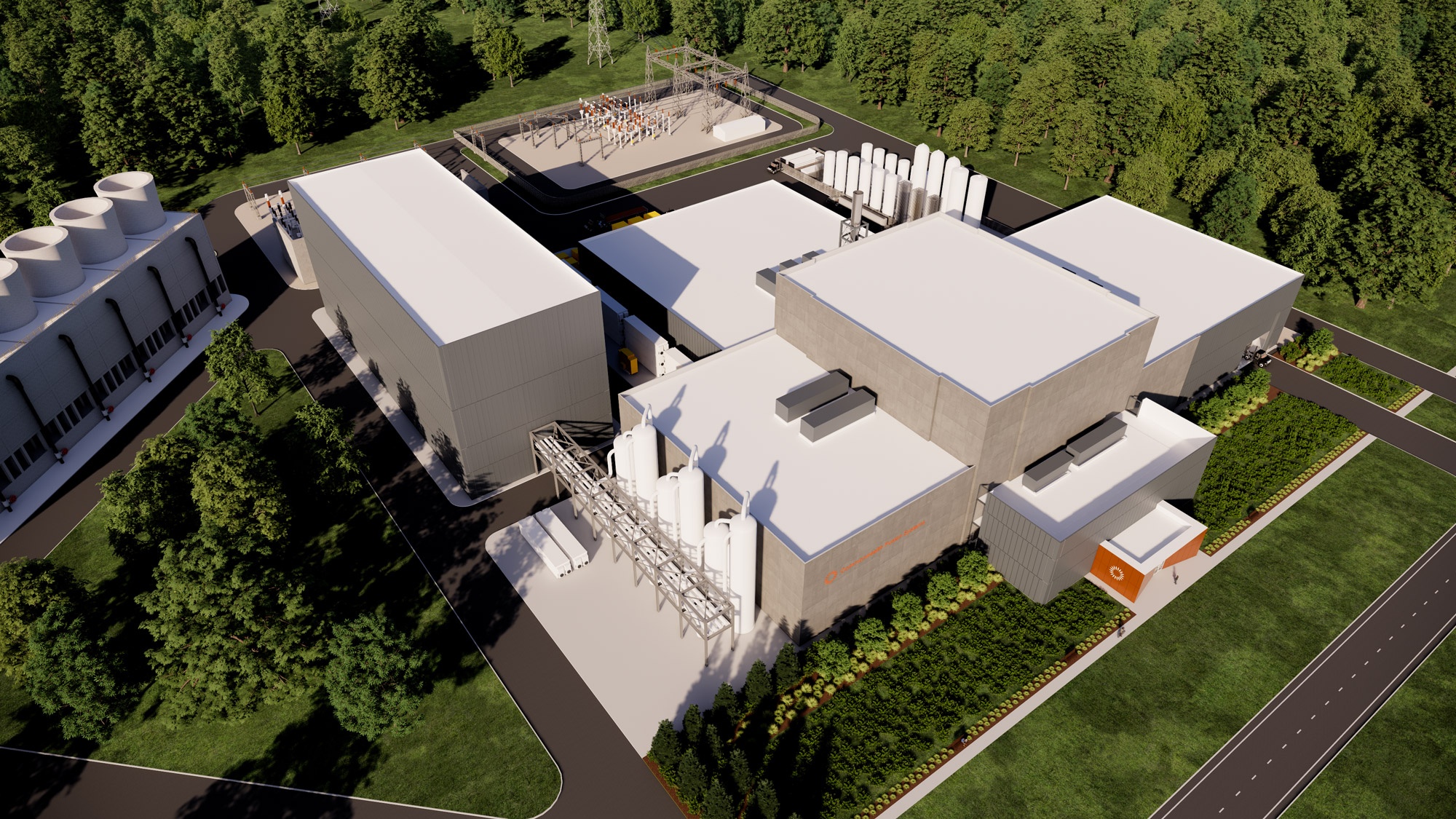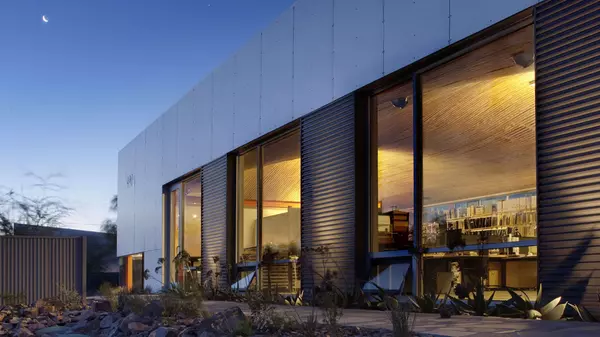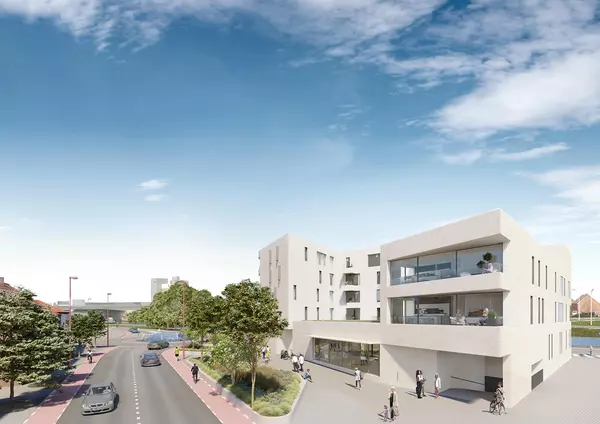‘The world’s first’: Startup plans multibillion-dollar fusion power plant in Chesterfield

Massachusetts-based Commonwealth Fusion Systems is planning to build a nuclear fusion plant in Chesterfield. (Images courtesy Commonwealth Fusion Systems)
A startup that was spun out of MIT is planning to build what it hopes will be the world’s first commercial nuclear fusion power plant in Chesterfield County.
Massachusetts-based Commonwealth Fusion Systems announced Tuesday its plans to build a 400-megawatt fusion plant, and has identified a 94-acre property outside Chester for the project.
The proposed power plant, which is known as ARC, is expected to be operational in the early 2030s. The facility is expected to generate enough electricity to power the equivalent of about 150,000 homes. CFS declined to share a cost estimate for the project.
The company would build and operate the power plant at 1201 Battery Brooke Parkway, which is currently owned by Dominion Energy.
The undeveloped site had previously been eyed by Dominion for a natural gas plant called the Chesterfield Energy Reliability Center, but now is expected to be leased by CFS for its fusion plant, though a lease agreement hasn’t been signed yet.
Kristen Cullen, vice president of global policy and public affairs at CFS, said the company spent a couple years looking for the right spot before it settled on Chesterfield County as the home to what it intends to be a history-making project.
“This has been a more than two-year global siting search that we embarked on to find the home to what will be not only Commonwealth Fusion Systems’ first fusion power plant, but the world’s first fusion power plant,” Cullen said.
Cullen expected that around 150 full-time employees would be needed to operate the plant when it first becomes operational.
The Chesterfield facility is anticipated to be CFS’s first power plant. The company is working on a prototype fusion machine called SPARC in Massachusetts that is slated to produce its first plasma, which is needed for nuclear fusion, in 2026.
CFS describes SPARC as the most advanced version of a machine called a tokamak, which is a donut-shaped device that uses magnetic fields to create plasma particles hot enough to fuse together, creating the conditions necessary for nuclear fusion to happen. The company is building its take on the tokamak design, which is intended to be smaller and cheaper than other tokamaks, at its campus in Devens, Massachusetts.
CFS calls itself the world’s largest private fusion company. It has more than 1,000 employees and says it has raised more than $2 billion in its quest to be the first to construct the world’s first, commercial-scale nuclear fusion plant.
The startup was founded in 2018 when it was spun out of MIT as a business venture to commercialize fusion power, which the company says would result in a cheap and safe means to meet the world’s growing appetite for electricity in an environmentally friendly way.
“In any sci-fi novel, movie, whatever, at least 20, 30 years in the future, what they’ll all have in common about energy is humans have mastered fusion,” said CFS Chief Commercial Officer Rick Needham. “It’s the end game. Our mission is to make that end game come sooner.”

A rendering of the ARC nuclear fusion tokamak. A prototype of the device is being developed by CFS at its Massachusetts headquarters.
Chesterfield Economic Director Garrett Hart said the CFS project stood to make Chesterfield a center for the fusion energy industry.
“It positions us well to be a central location for the creation of fusion power and all the industry, all the things associated with that. There’ll be scientists traveling from all over the world to see this facility and understand how it works. And this first facility will grow into more facilities,” Hart said.
Chesterfield anticipates it will provide a performance-based grant for the project, which hasn’t been finalized yet, Hart said.
CFS is getting a $1 million grant from the Virginia Clean Energy Innovation Bank, a state program that supports clean-energy projects, along with $1 million in matching funds from Chesterfield, per a news release from the governor’s office.
The project still has local, state and federal permitting to secure, including a conditional-use permit from Chesterfield. The local permit application is expected to be reviewed by the Chesterfield Planning Commission and Board of Supervisors next year, with approval by the board potentially coming in the summer.
The Chesterfield plant would be plugged into the electrical grid and sell power through PJM, which is a regional power transmission organization that runs an electrical power market in 13 states, including Virginia, and Washington, D.C.
CFS anticipates it will sell the plant’s power to large commercial and industrial customers. While the Chesterfield plant is in its early stages, talks are underway with potential users now, Needham said.
“We are currently seeking those customers and we have been in lots of conversations with potential customers,” he said.

Gov. Glenn Youngkin shares remarks during the announcement of the Commonwealth Fusion Systems project to build a fusion power plant in Chesterfield. (Jack Jacobs photo)
Nuclear fusion is pitched as a renewable clean energy solution. The process involves the collision and fusion of atomic nuclei. The reaction that takes place when nuclei bump into each other and fuse is how the sun generates its energy. Nuclear fusion does not result in long-lived, highly radioactive waste associated with the operation of traditional nuclear fission power plants and doesn’t create pollution.
“Fusion is the process that happens inside the stars. It’s the most common process in the entire universe,” CFS co-founder and CEO Bob Mumgaard said in his remarks during the project’s announcement event Tuesday afternoon. “It’s the thing that creates all the heat and light. On Earth, when we get it to work, we’ll use it to make electricity in fusion power plants. That electricity will be clean, it’ll be (reliable), it’ll be safe.”
How to recreate the process at scale with manmade technology has been researched for decades, and CFS and other firms around the world are racing to be first to figure out how to commercialize the process.
“Fusion has always been something that happened in places like universities and national labs. But the problems are bigger than that,” Mumgaard said. “We believe that we can take proven fusion machines that have been researched in those labs, combine them with new types of technology, strong magnets, and enable us to build power plants at a time scale we thought previously would take many decades, and to do that out in the world, commercially.”
The fusion plant was jointly announced by Gov. Glen Youngkin’s office and CFS. During the event held in the Patrick Henry Building in downtown Richmond, Youngkin hailed the project as a potentially history-making, “multibillion-dollar” investment, and said the plant was expected to have an operational life of 20 years or longer.
“This will add to our existing infrastructure in a way that I think will provide a new frontier, a new frontier for Virginia businesses and Virginia residents. My friends, the future can be seen in what Commercial Fusion Systems will be building,” Youngkin said.
Editor’s note: This story has been updated with comments from Tuesday’s event and additional information and imagery.
The post ‘The world’s first’: Startup plans multibillion-dollar fusion power plant in Chesterfield appeared first on Richmond BizSense.
Recent Posts
GET MORE INFORMATION

Agent | License ID: 0225209440









